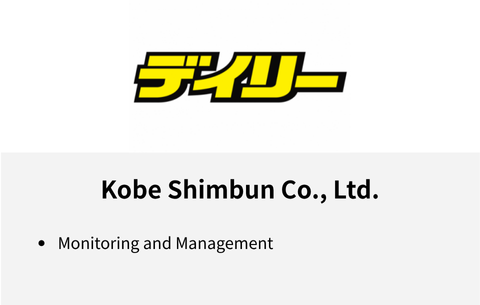How to Create a VPC Environment Using CloudFormation (Vol.2)
- ca-member
- Jan 23, 2023
- 2 min read
This article is a continuation from our last blog post.

Let's create a VPC from the template file we created last time.
Create a stack
First, log in to the development server and register the API key of the user who executes CloudFormation as shown below.
[root@localhost ~]# aws configure
AWS Access Key ID [****************XXXX]:
AWS Secret Access Key [****************XXXX]:
Default region name [ap-northeast-1]:
Default output format [XXXX]:If there’s no aws command, install as the following.
[root@localhost ~]# yum install epel-release
[root@localhost ~]# yum install python-pip
[root@localhost ~]# pip install awscliMake sure that there is vpc.yml that was created last time and then use the following command to create a VPC.
arn:aws:cloudformation:ap-northeast-1:189461266018:stack/vpc/7b29dce0-4c70-11e9-8b3c-0ee87e6fb924The status can be checked with the following command.
When “CREATE_COMPLETE” is displayed, the resource is completed.
aws cloudformation describe-stacks --stack-name vpc
STACKS 2019-03-28T02:12:32.683Z False False arn:aws:cloudformation:ap-northeast-1:189461266018:stack/vpc/f23007a0-50fe-11e9-88b0-0e819627e6da vpc CREATE_COMPLETE
DRIFTINFORMATION NOT_CHECKED
PARAMETERS PublicSubnetCider 10.31.0.0/24
PARAMETERS ProjectCode test
PARAMETERS VPCCider 10.31.0.0/16A VPC and a subnet with the specified identifiers must be successfully created.
Delete the resources
Now let’s delete all the resources that were created at once.
When you delete the resources manually, you need to go to each resource’s screen and delete each resource individually, but the resources created with CloudFormation can be deleted from a single console.
Go back to the development server and then run the following command.
[root@localhost ~]# aws cloudformation delete-stack --stack-name vpcNow, let’s check the deletion progress.
Run the following command and if you see “DELETE_IN_PROGRESS”, it means it’s deleting the resources.
[root@localhost ~]# aws cloudformation describe-stacks --stack-name vpc
STACKS 2019-03-28T02:12:32.683Z 2019-03-28T02:20:53.902Z False False arn:aws:cloudformation:ap-northeast-1:189461266018:stack/vpc/f23007a0-50fe-11e9-88b0-0e819627e6da vpc DELETE_IN_PROGRESS
DRIFTINFORMATION NOT_CHECKED
PARAMETERS PublicSubnetCider 10.31.0.0/24
PARAMETERS ProjectCode test
PARAMETERS VPCCider 10.31.0.0/16Once the stack deletion is completed, it shows the following error.
[root@localhost ~]# aws cloudformation describe-stacks --stack-name vpc
An error occurred (ValidationError) when calling the DescribeStacks operation: Stack with id vpc does not existThe VPC must be deleted at this point.
Explanation
Let me explain what each command does.
# aws cloudformation create-stack \
↑ Declare the use of cloudformation by aws cloudformation. create-stack to create a stack, delete-stack to delete a stack.
> --stack-name vpc \
↑ stack-name [name] Set a stack name
> --region ap-northeast-1 \
↑ --region [region] Set a region to create a resource.
> --template-body file://./vpc.yml
↑ --template-body [fileURL] Specify the template file URLYou can create a VPC with minimum commands like this.
Also, if you want to change the values of the parameters, you can do the following.
# aws cloudformation create-stack \
> --stack-name vpc \
> --region ap-northeast-1 \
> --template-body file://./vpc.yml
> --parameters \
> ParameterKey=ProjectCode,ParameterValue=test-beyondjapan \
> ParameterKey=VPCCider,ParameterValue="10.23.0.0/16" \
> ParameterKey=PublicSubnetCider,ParameterValue="10.23.0.0/24"Declare each parameter to use with “Parameters”, and set a parameter ID with “ParameterKey”, and set value with “ParameterValue”.
Summary
This time, the creation and deletion of a stack and each resource could be performed from the console.
You can easily delete and create AWS resources using CloudFormation like this.
This blog post is translated from a blog post written by Okazaki Junichiro on our Japanese website Beyond Co..




Comments